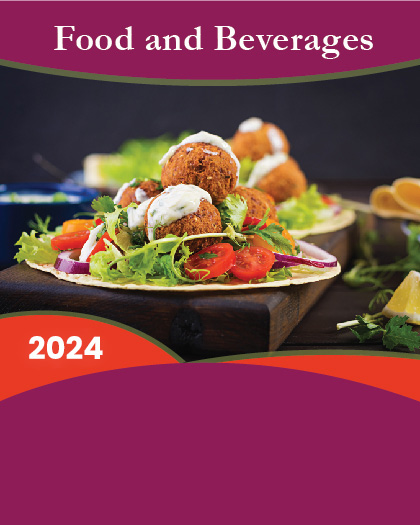1. Preface
1.1. Objectives of the Study
1.2. Market Segmentation & Coverage
1.3. Years Considered for the Study
1.4. Currency & Pricing
1.5. Language
1.6. Stakeholders
2. Research & Forecasting
2.1. Research Methodology
2.1.1. Research Process
2.1.2. Research Framework
2.1.3. Research Reliability & Validity
2.1.4. Research Assumptions
2.2. Forecasting Methodology
2.3. Research Outcome
3. Executive Summary
3.1. Seeds Market: Outlook
3.2. Seeds Market: Current State & Forecast
4. Premium Insight
4.1. Market Connectivity
4.2. Market Data Feed
4.2.1. Market Sizing & Forecasting, by Seed Type
4.2.2. Market Sizing & Forecasting, by Traits
4.2.3. Market Sizing & Forecasting, by Treatment
4.2.4. Market Sizing & Forecasting, by Type
4.2.5. Market Sizing & Forecasting, by Geography
5. Market Dynamics
5.1. Drivers
5.2. Restraints
5.3. Opportunities
5.4. Challenges
6. Industry Insight
6.1. Porter's Five Forces Analysis
6.1.1. Threat of New Entrants
6.1.2. Threat of Substitutes
6.1.3. Bargaining Power of Customers
6.1.4. Bargaining Power of Suppliers
6.1.5. Industry Rivalry
6.2. Client Customizations
7. Global Seeds Market, by Seed Type
7.1. Conventional Seeds
7.2. Genetically Modified Seeds
8. Global Seeds Market, by Traits
8.1. Herbicide-Tolerant
8.2. Insecticide-Resistant
9. Global Seeds Market, by Treatment
9.1. Non-Treated
9.2. Treated
10. Global Seeds Market, by Type
10.1. Alfalfa
10.2. Cereals & Grains
10.2.1. Corn
10.2.2. Rice
10.2.3. Sorghum
10.2.4. Wheat
10.3. Clovers & Other Forage
10.4. Flower Seed
10.5. Fruits & Vegetables
10.5.1. Brassica
10.5.2. Carrot
10.5.3. Lettuce
10.5.4. Melons
10.5.5. Onion
10.5.6. Pepper
10.5.7. Tomatoes
10.6. Oilseeds
10.6.1. Canola/Rapeseed
10.6.2. Cotton
10.6.3. Soybean
10.6.4. Sunflower
10.7. Turf Grasses
11. Global Seeds Market, by Geography
11.1. Americas
11.1.1. Argentina
11.1.2. Brazil
11.1.3. Canada
11.1.4. Mexico
11.1.5. United States
11.2. Asia-Pacific
11.2.1. Australia
11.2.2. China
11.2.3. India
11.2.4. Japan
11.3. Europe, Middle East & Africa
11.3.1. France
11.3.2. Germany
11.3.3. Italy
11.3.4. Spain
11.3.5. United Kingdom
12. Competitive Landscape
12.1. 360iResearch FPNV Positioning Matrix
12.1.1. 360iResearch Quadrants
12.1.1.1. Forefront
12.1.1.2. Pathfinders
12.1.1.3. Niche
12.1.1.4. Vital
12.1.2. Business Strategy
12.1.2.1. Business Growth
12.1.2.2. Industry Coverage
12.1.2.3. Financial Viability
12.1.2.4. Channel Support
12.1.3. Product Satisfaction
12.1.3.1. Value for Money
12.1.3.2. Ease of Use
12.1.3.3. Product Features
12.1.3.4. Customer Support
12.2. Market Vendor Ranking Analysis
12.3. Competitive News Feed Analysis
13. Company Usability Profiles
13.1. Bayer Cropscience AG
13.1.1. Overview
13.1.2. Strategy
13.1.3. SWOT
13.2. E.I. Du Pont De Nemours and Company
13.2.1. Overview
13.2.2. Strategy
13.2.3. SWOT
13.3. Groupe Limagrain
13.3.1. Overview
13.3.2. Strategy
13.3.3. SWOT
13.4. KWA SAAT SE
13.4.1. Overview
13.4.2. Strategy
13.4.3. SWOT
13.5. Land O'lakes, Inc.
13.5.1. Overview
13.5.2. Strategy
13.5.3. SWOT
13.6. Monsanto Company
13.7. Rallis Limited India
13.8. Sakata Seed Corporation
13.9. Syngenta AG
13.10. The DOW Chemical Company
14. Appendix
14.1. Discussion Guide
14.2. 360iResearch Competitive Strategic Window
14.2.1. Leverage Zone
14.2.2. Vantage Zone
14.2.3. Speculative Zone
14.2.4. Bottleneck Zone
14.3. Top Reports
14.3.1. Global Crane Rental Market
14.3.2. Global Computer Vision Market
14.3.3. Global Payment Gateway Market
14.3.4. Global B2B Travel Market
14.3.5. Global Varicose Vein Treatment Devices Market
14.4. Author Details























